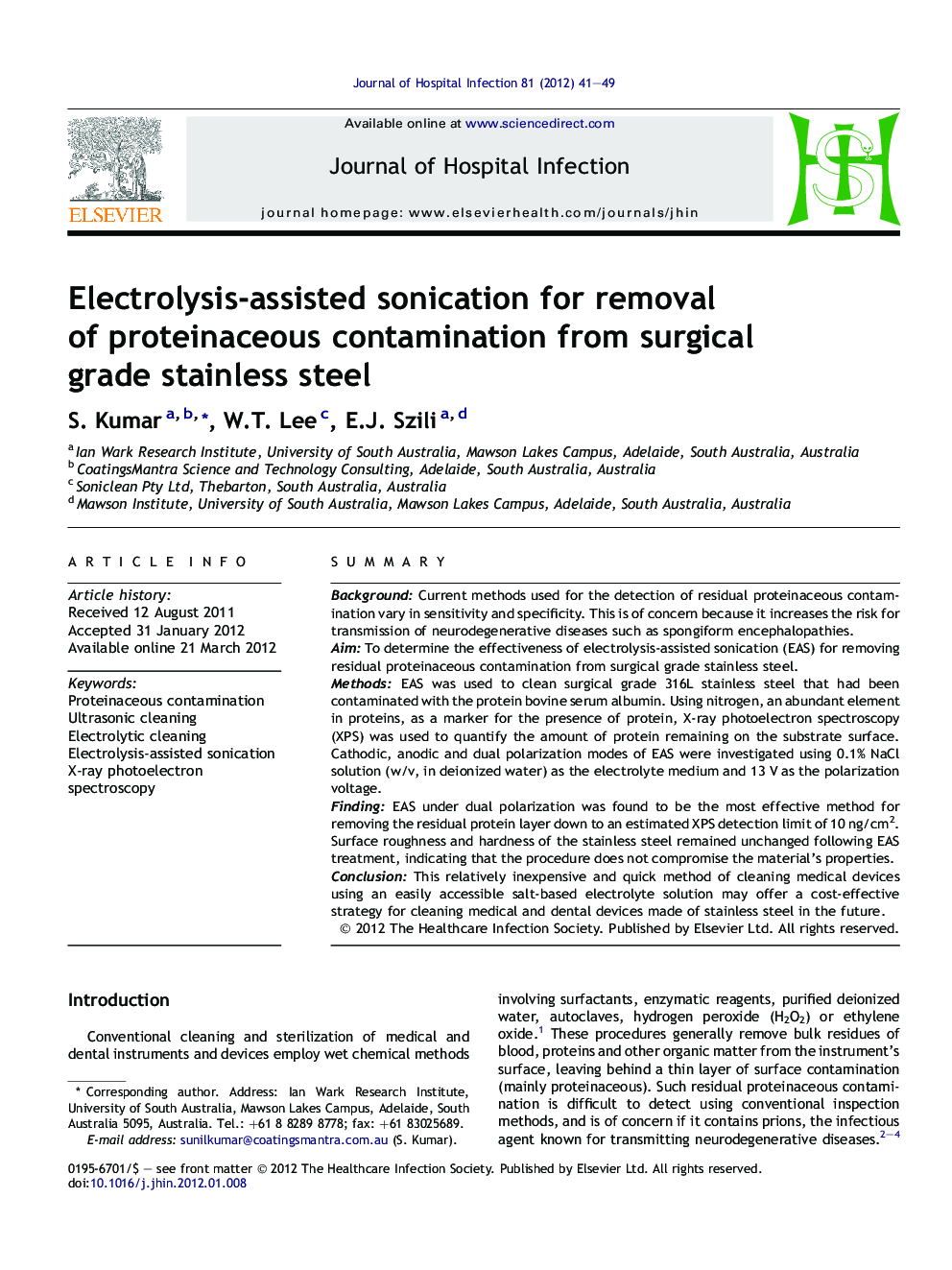| Article ID | Journal | Published Year | Pages | File Type |
|---|---|---|---|---|
| 3371881 | Journal of Hospital Infection | 2012 | 9 Pages |
SummaryBackgroundCurrent methods used for the detection of residual proteinaceous contamination vary in sensitivity and specificity. This is of concern because it increases the risk for transmission of neurodegenerative diseases such as spongiform encephalopathies.AimTo determine the effectiveness of electrolysis-assisted sonication (EAS) for removing residual proteinaceous contamination from surgical grade stainless steel.MethodsEAS was used to clean surgical grade 316L stainless steel that had been contaminated with the protein bovine serum albumin. Using nitrogen, an abundant element in proteins, as a marker for the presence of protein, X-ray photoelectron spectroscopy (XPS) was used to quantify the amount of protein remaining on the substrate surface. Cathodic, anodic and dual polarization modes of EAS were investigated using 0.1% NaCl solution (w/v, in deionized water) as the electrolyte medium and 13 V as the polarization voltage.FindingEAS under dual polarization was found to be the most effective method for removing the residual protein layer down to an estimated XPS detection limit of 10 ng/cm2. Surface roughness and hardness of the stainless steel remained unchanged following EAS treatment, indicating that the procedure does not compromise the material’s properties.ConclusionThis relatively inexpensive and quick method of cleaning medical devices using an easily accessible salt-based electrolyte solution may offer a cost-effective strategy for cleaning medical and dental devices made of stainless steel in the future.
